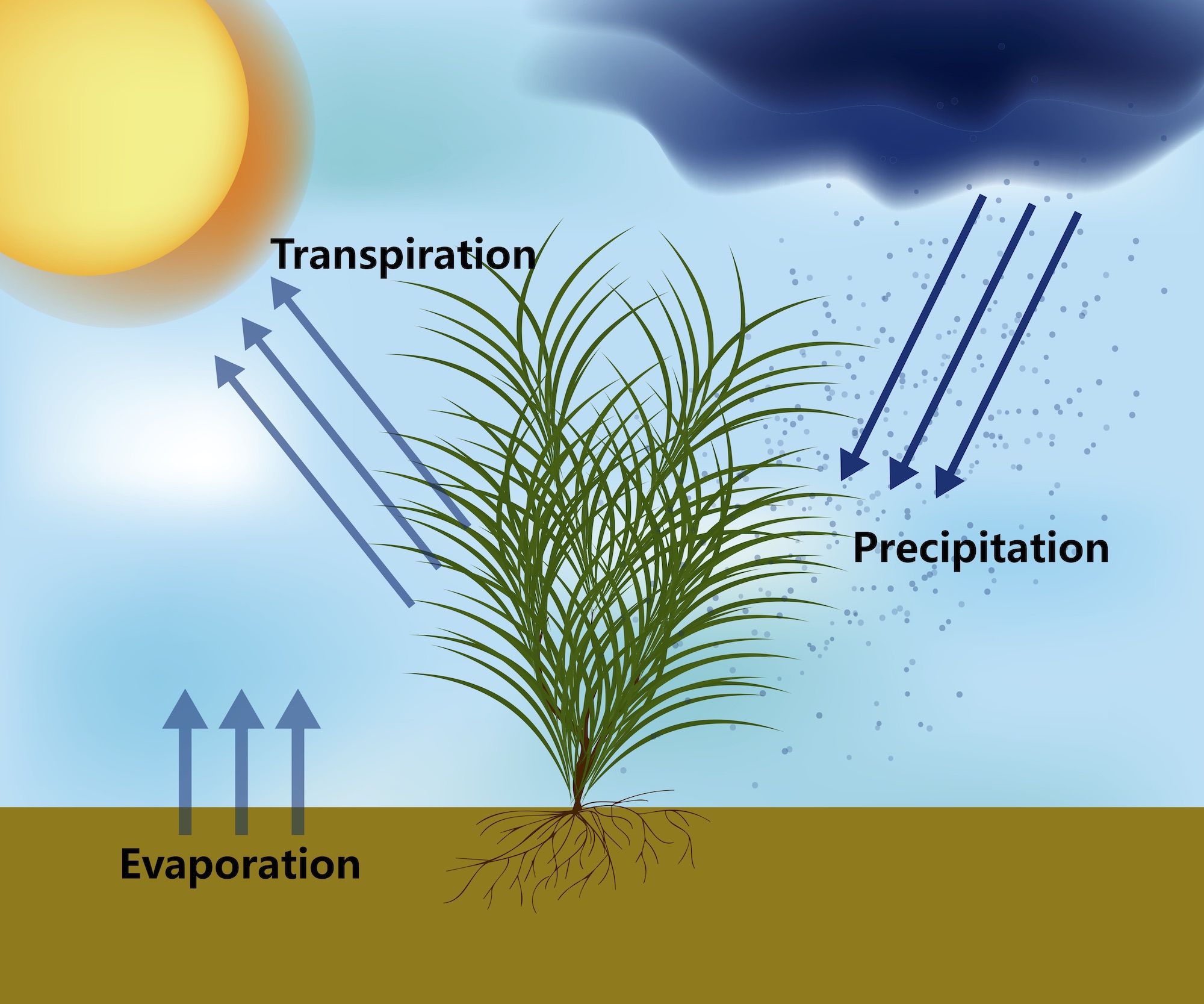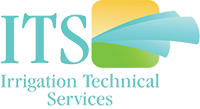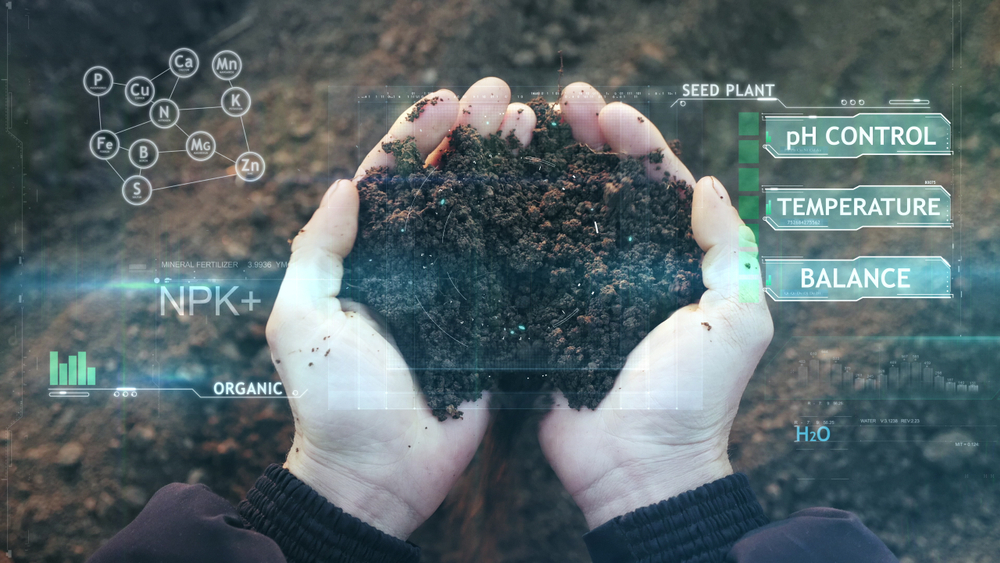Blog/insights
What is ET?
When asked, most people refer to the 1982 hit movie by Steven Spielberg.
In the irrigation world, ET is a vastly different answer.
ET is an abbreviation for evapotranspiration. Evapotranspiration combines two scientific words – evaporation and transpiration. Evaporation plus transpiration equals evapotranspiration (ET).
Quite simply, evapotranspiration is the loss of moisture in the landscape caused by evaporation from the soil and transpiration of moisture from plant leaves. Studies have found that transpiration accounts for roughly 10% of the moisture in the atmosphere. The other 90% or so comes from bodies of water such as oceans, lakes, rivers, and streams.
With each breath we take we release water vapor. A plant does the same, but the term transpiration is used. A plant’s root system will draw water and nutrients from the soil up to its stems and leaves. From there, the plants transpire some of this water into the atmosphere. During dry periods or drought-like conditions, transpiration can contribute to the loss of water in the upper root zone. This can have a huge, negative effect on the plant.
Transpiration is not a process you can visibly see. Remember, water is transpiring from the leaf. To put this in some perspective, a large oak tree can transpire 40,000 gallons of water per year or 110 gallons per day!
ET is affected by the length of the daylight hours (solar), temperature, wind, and humidity. ET is usually expressed in inches or fractions of inches of water loss per day, week, or month.
ET rates go up as the temperature rises, especially during the growing season. When humidity rises around a plant the transpiration rate falls because it is easier for a plant to transpire into drier air. Increased movement of air (wind) will blow the saturated (wet) air away from the plant and this air is replaced by drier air.

Two other factors for plant transpiration are the moisture in the soil itself and the type of plant. When moisture in the soil is lacking the plants could begin to lose leaves, therefore transpiring less water into the atmosphere. Different plants transpire water at different rates. A cactus is vastly different than a Schefflera.
Soil conditions are very important to ET. The top layer of soil is where you have a majority of a plant’s roots, sometimes, up to 75%. There is moisture there for the plant’s taking under normal conditions but it’s likely not totally saturated. When it rains or there is an irrigation event, water will infiltrate this top layer. When there is no precipitation this layer will dry out.
Think about ET this way, in the Tampa Bay area, ET is relatively low during the cooler months, running at a rate of .10 or so. When we are knee deep in the Florida summer heat, ET can run between .25 through .30. Another way to look at it is plant and sod growth itself. I know I mow my grass about every 2-3 weeks between December and March whereas the remaining months of the year it’s at least once per week, sometimes every 4-5 days. What does this mean? Well, during the growing/hot season ET will be substantially higher.
Generally speaking, whatever water is lost to ET is the amount that should be replaced by rainfall and or irrigation. That’s why keeping track of this amount is the single most important factor to consider in scheduling your irrigation. It allows you to replace only the water that is lost. Apply water beyond ET and you waste it, either through evaporation, runoff, or percolation through the soil. Measuring ET is very similar to measuring rainfall, except where rainfall is a water gain, ET is a water loss.
As stated above, ET is affected by a number of factors and a weather station is a device that measures these factors with very high accuracy. It then communicates this information back to the entire network of irrigation controllers, which then adjusts the irrigation.
Having your own on-site weather station would be the most accurate because it would be providing information directly for you, as opposed to an off-site station that may be in a different microclimate and may require adjustments.
If we can accurately determine how much water has entered and left plants and the surrounding soil, we can determine how much water to replenish the landscape at any point in time. For instance, say you are set to run your irrigation on Mondays and Thursdays. There is no rain. Weather station shows ET data as –
Tuesday – .21
Wednesday – .22
When you irrigate on Thursday your goal is to water .43 inches. You want to replenish what was lost through ET.
Do you currently use ET at your property? If so, how do you use ET to benefit your property? If not, is ET something you want to introduce into your irrigation water management? If so, please ask yourself these questions –
- Where will you pull necessary ET data?
- Do you have a weather station or do you want to purchase a weather station?
- Do you have the proper irrigation controller?
- How will you monitor ET and adjust your irrigation controller?
ET-based irrigation programming allows irrigation managers to increase the efficiency of irrigation based on plant water requirements. In the end, this will lead to optimum irrigation water use.
Irrigation Tool Guide: What is a Soil Moisture Sensor
What Does a Soil Moisture Sensor Do?
Have you ever been driving during a torrential downpour and noticed someone’s automatic sprinklers drowning their grass and plants in already soaked soil? In Florida, we all have! What they need is a rain sensor. Typically an irrigation controller with a working rain sensor will shut the irrigation system down for 48 hours. When soil moisture sensors are used it’s technology that is coordinated between this sensor and the rain sensor. For instance with the Baseline system, if both sensors are installed, the rain sensor will shut down the system while the soil moisture sensor basically tells the controller when to turn back on, depending on where the (water) depletion level is set within the soil moisture sensor.
Water conservation technology is vital in order to reduce unnecessary irrigation events and responsibly respond to the global need to regulate water consumption in agriculture. Implementing smart irrigation tools will end up proving to be more cost-effective while helping the planet out!
If you are browsing for a solution to your plant care needs, especially when it comes to perfecting crop and plant water consumption, a soil moisture sensor will change the way you garden and do yard work. Simply put, the soil moisture sensor is going to make sure your plant is not getting over or underwatered.
This is water conservation technology, and it is the best way to decrease your plant’s water intake, without depriving them of the energy and nutrition they need. By providing the technology to estimate the moisture level in the soil, you gain the ability to increase the durability and production of plant materials, while saving money and conserving water.
How Does a Soil Moisture Sensor Work?
Now how is a probe in my lawn going to do all of this? Plant moisture sensors are designed to gauge the estimated water content of the soil based on the soil bulk permittivity, which is also known as the dielectric constant. This is what indicates the soil’s potential to transmit electricity.
Basically, as your lawn is getting watered, the water content is going to increase in your soil. The dielectric constant of the soil in your lawn is going rise at the same time. Once the soil moisture sensor is professionally installed, the technology can estimate the percentage of water in the soil to decide if watering is necessary.
Made up of two components known as the probe, and the module, the pronged sensor leaves a fork of exposed conductors that are meant to act as a variable resistor; resistance automatically adjusts according to any given plant’s volumetric water content level. Additionally, intricate irrigation systems utilize moisture sensors to produce an output voltage, like a generator for your lawn.
In a few words, the sensor does its thing, and based on the resistance level it detects in the soil, the moisture level is calculated. If the resistance is high, that means the soil is not hitting its optimal moisture level. In that case, your soil moisture sensor will signal the need to work efficiently and supply automatic irrigation to your plant. If the soil moisture sensor detects lower resistance, it will opt out of watering, conserving water, and money!
Depending on the custom set volumetric water content level that the user sets, the system will be directed to complete the event, by watering the plant, or skipping the event because the moisture level in the soil is high enough.
Supplying plant matter with the correct amount of water, rather than overwatering, is going to increase the longevity of the plant matter, creating a robust plant lineage that will populate your garden, lawn, or farm for years to come.
This is a vast improvement from past irrigation systems that used timers and automatic functions without codes that prevent unnecessary usage. Previously, the system followed an irrigation schedule, no matter what.
This resulted in a major loss of water and a deep and unnecessary cut into the already-bare watering restrictions that some states face, like Florida. Innovations like the moisture sensor facilitate the best watering schedule for your plant material so that you are using your limited amount of water on the appropriate occasions. This regulation of personal consumptions will actually keep your plants healthier, and the long-term effects of water conservation can only benefit the environment for future generations in the years to come!
What Value Does A Soil Moisture Sensor Provide?
The handy soil moisture sensor is just one component of the bigger irrigation system. Working alongside the central control, weather systems, flow sensors, and more, the moisture sensor is an affordable and important accessory to add to your irrigation routine. At Newberg Irrigation, our highly trained professionals expend every possible appliance that innovative water conservation technology offers to ensure low volume irrigation whilst maintaining perfectly saturated plant material.
The concept brought forth from this product is water conservation. Believe it or not, plant moisture sensors provide personal value as well as providing an indispensable global tool.
The grass is greener on the other side because they use a soil moisture sensor! The personal value this technology provides goes beyond aesthetics, though. Your conscious effort to conserve water is going to improve the appearance of your lawn because it is healthier, and stronger. Healthier plants, while saving money, can it get better? It can.
While you are saving yourself money, and water, you are also proving an immense value to the planet by promoting the global regulation of water consumption in agriculture. There are several benefits to this. According to the Food and Agriculture Organization of the United Nations (FAO), agriculture accounts for approximately 70 percent of the world’s water usage and withdrawal. Regulation starting at low levels can improve the global water crisis; in 2019, the World Health Organization reported that 2.2 billion people across the globe did not have access to safe drinking water. Overwhelming percentages of the human population lack the basic sustaining factor of life, while many irrigation systems waste inappropriate amounts of it! With a soil moisture sensor, this simply does not happen.
If you are passionate about water conservation and regulation, it is imperative to start small- prioritize using low-level irrigation systems in your businesses and homes. Tools like plant moisture sensors are a great way to understand the necessary water usage for robust plants and further gain insight into how much water you will begin to save!



